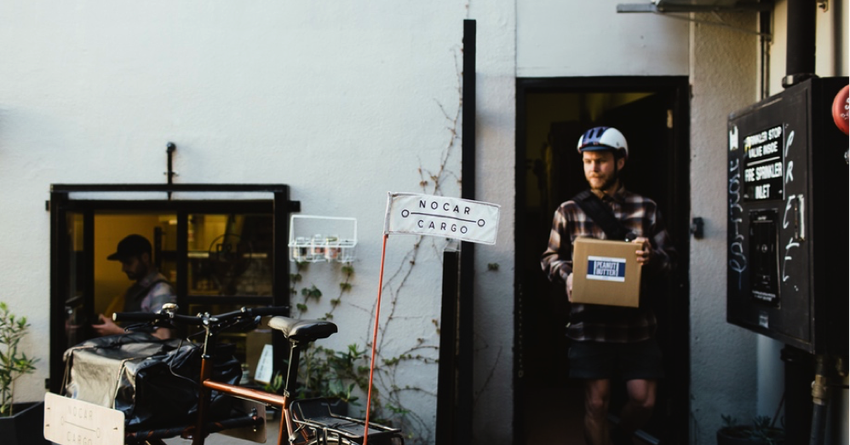There’s gold in them thar wheels: why delivery-by-bike is still delivering the goods

Delivery by bike is obviously not a new idea. But, through a combination of good luck and good planning, it seems to be experiencing something of a renaissance as delivery services become de rigueur.
Silverwood delivers primarily for food and beverage producers, retailers and offices around the city, and he says it has opened up their market considerably.
“It is probably around 50/50 between producer/retailer and those going to end consumer.”
Wellington is a great example of a city where a commercial and environmental synergy can exist between bike deliverers, retailers, hospitality providers, and offices.
“Travelling by bike is much less susceptible to spikes in traffic,” says Silverwood.
He notes that traffic is becoming an increasing and major issue in Auckland and Wellington. Cycling is both more efficient and less costly than driving, while also being much better for the environment and our congested city roads. Urban Sherpa, which schleps whatever you need, by bicycle, straight to your door, obviously agrees.
While logistics has become a surprisingly sexy business, with the likes of Uber Rush, Amazon Prime Air and Google Express all signs that the big boys want in on the delivery action, this simpler, pedal-powered model has become extremely popular and quite lucrative in other major overseas cities.
Boston-based bicycle delivery service Dashed saw a gap in the market after the city’s major delivery service folded. Since 2009, it has since rolled out its service to seven cities, delivering for more than 800 restaurants. It is now a US$4.6m business.
B-Line, a Portland, Oregon-based delivery service, positions itself as “sustainable urban delivery.” One of its major clients is Office Depot, for which B-Line uses its electric-powered bikes to transport parcels. The company has replaced 20,000 truck and van deliveries since it started in 2009 using six bikes and 15 people.
For companies that invariably produce large carbon footprints – both in production and transportation – even before their goods reach the consumer, a chance to limit this impact while improving their relationship with the consumer seems obvious.
There are limitations, of course. Size being a major one, although some of the new breed of cargo bikes—AKA eco-friendly SUVs—can carry over 220kgs. But for a tipping point in delivery method to be reached in New Zealand, there needs to be an attitudinal change, both amongst consumers and businesses.
“As cycling becomes mainstream and widely recognised as a sensible way to get around, combined with introducing infrastructure to improve safety, we’re going to see an increasing demand,” Silverwood says.
And with the change in attitude, “bikes will be increasingly employed as a sustainable, healthy, and sensible transport choice”.
- This story originally appeared on The Register




